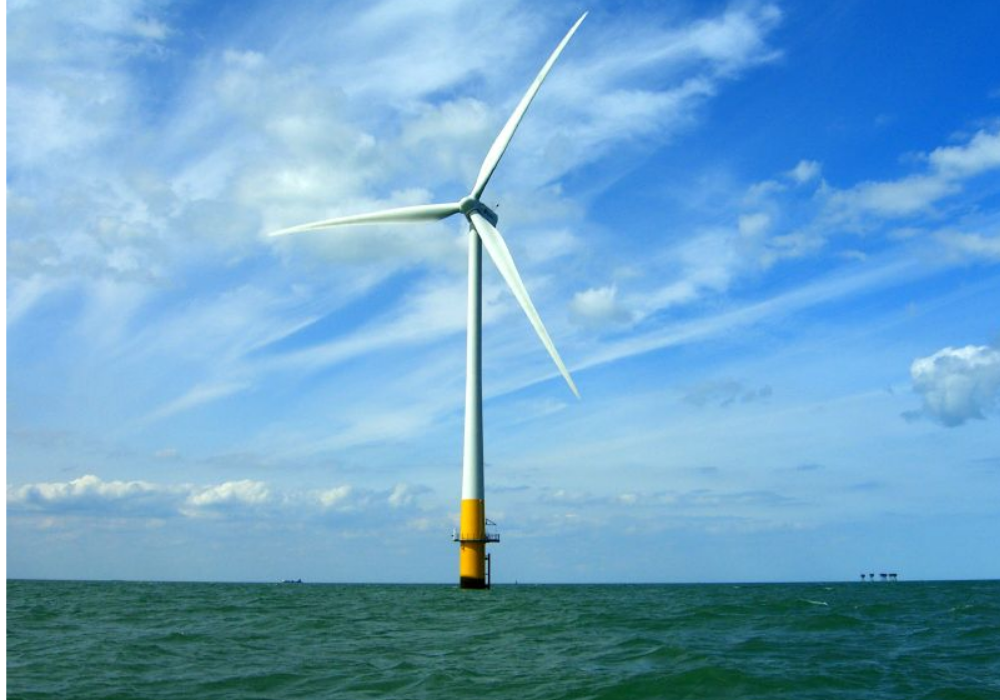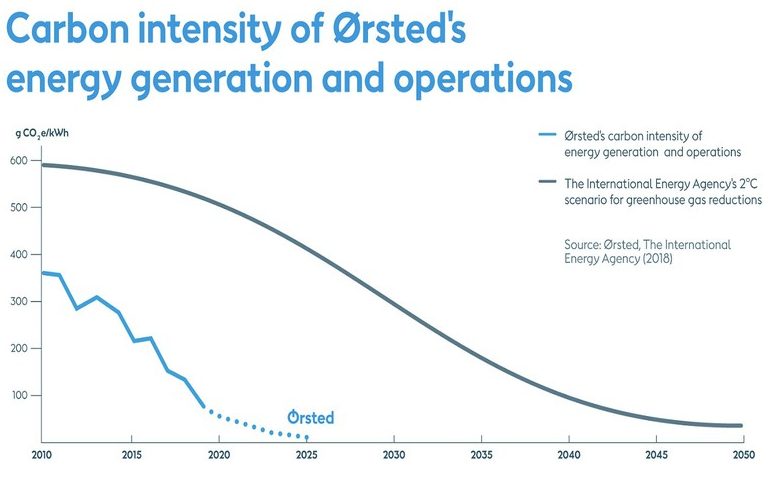Danish energy firm Orsted was recently named the world's most sustainable company and has now further stepped-up its climate targets

The Asian Renewable Energy Hub has been dubbed the world’s largest clean energy project (Credit: Flickr/Phil Hollman)
Orsted is aiming to become the first major energy company to reach net zero on emissions by 2025 in its bid to help clean up the economy.
The Danish firm — which is also hoping to achieve a carbon-neutral footprint by 2040 — was ranked the world’s most sustainable company in the Corporate Knights’ 2020 index of the Global 100 most sustainable corporations.
It is the leading developer of offshore wind and claims to have installed up to a third of all such turbines globally.
Orsted claims that by driving out carbon emissions from its energy generation and operations, it has reduced the pollutant by 86% compared with 2006.
Orsted CEO Henrik Poulsen believes his company is more than two decades ahead of environmental goals set to limit global warming to 1.5C by 2050.
“Halting climate change requires action at all levels of society, and we need that action now, especially within production and the use of energy, which account for 73% of all global emissions,” he added.
How Orsted will become net zero on emissions by 2025
In the past 10 years, Ørsted has transitioned from a company with fossil fuels at the core of its business to one that champions renewables — making it one of the greenest firms in the world today.
Poulsen said he has seen a real strengthening of the firm’s business since switching to clean energy technologies and has proven that a rapid green turnaround is possible.
“Our change from black to green energy has not been easy but it’s been necessary,” he added.
“I hope that our transformation inspires countries and businesses to take more radical actions than they might think possible.
“There really is no time to lose if the world is to halve emissions by 2030 and stay below the 1.5C temperature goal.”

Orsted believes the most important levers in reaching carbon neutrality are a complete phase-out of coal by 2023, and the installation of 20 gigawatts (GW) of offshore and onshore wind by 2025.
This will be supported by a commitment to invest 200bn Danish krone ($29.5bn) into green energy between 2019 and 2025 — which it claims will see its CO2 reduced by at least 98% by 2025.
Although the firm said the remaining emissions will be harder to eradicate, it is striving to find solutions to ensure the net zero goal is achieved.
It is, however, putting an end to purchases or leases of fossil-fuelled cars as of 2021 — making its entire car fleet electric by 2025.
Should offsetting become necessary, Orsted confirmed it will only engage with projects that are verified, measurable and additional — meaning any carbon removal will not take place without its engagement.
How Orsted will ensure its footprint is carbon neutral by 2040
Alongside the company’s net zero emissions target, it is embarking on the next phase of its decarbonisation journey — addressing carbon emissions from its energy trading and the supply chain.
It is aiming for a 50% CO2 reduction in these areas by 2032 compared with 2018 levels, before reaching a carbon neutrality footprint by 2040.
The energy firm said it plans to gradually phase-out natural gas trading activities while increasing its green share of traded power.
It added it will engage with suppliers to reduce carbon emissions from the manufacture and installation of renewable energy, and encourage them to set emission reduction targets that ensure their operations are conducted on green energy.
Poulsen admitted it will be challenging to reach a carbon-neutral footprint by 2040 and will require significant innovation in all parts of the company’s supply chain.
“Many of the green technologies to be used to decarbonise our supply chain exist but they’re not yet cost-competitive,” he added.
“With the 2040 target, we want to help drive the necessary innovation forward to mature the green technologies in the industries that supply to us.”
